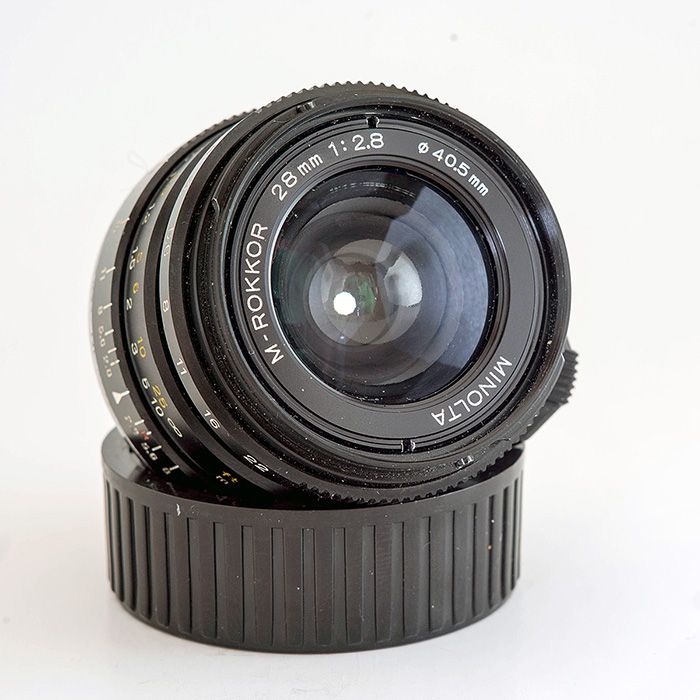kuuan
loves old lenses
My copy of the M-Rokkor f2.8/28mm had the dreaded 'white spot issue' in an advanced state, they not only appeared around the outer rim, which is said not to impact IQ,
but the full surface of the front lens was effected and photos taken had an overall soft look

Minolta M-Rokkor f2.8/28mm by Andreas, on Flickr
so I decided to try to fix it and polished the rear of the front lens. Now the lens looks like this ( actually a bit better again, I later repainted the black, outer rim once more )

Now images look sharper but since polishing must have removed the coating that had gone bad the lens now very easily 'glows' and it handles highlights, specially against dark, high contrast areas rather badly.
a few typical samples ( taken on Sony A7 )

Nha Trang by Andreas, on Flickr
typical problem of a tree against the sky

cementery by Andreas, on Flickr
if there are no strong highlights there is little problem

Khai Doan Pagoda by Andreas, on Flickr

Untitled by Andreas, on Flickr
sure it looses contrast easily and it's use is somewhat limited

picnic by Andreas, on Flickr
and I had to invest more of my limited editing skills than usual to make these look like this, added 'clarity' in Lightroom, something I usually don't.
to see full size choose 'view all sizes' after clicking on the image and the 'download' arrow at the lower, right corner of the page. If required I may add 100% crops and more samples, see all photos taken with this lens here: https://www.flickr.com/photos/kuuan/albums/72157644175227413
in spite of it's obvious flaws still I rather like the images, let's say the 'vintage look of them'. What do you think? Am I not able to 'accept defeat' and they actually are simply too bad?
grateful for any opinion, cheers, andreas
but the full surface of the front lens was effected and photos taken had an overall soft look

Minolta M-Rokkor f2.8/28mm by Andreas, on Flickr
so I decided to try to fix it and polished the rear of the front lens. Now the lens looks like this ( actually a bit better again, I later repainted the black, outer rim once more )

Now images look sharper but since polishing must have removed the coating that had gone bad the lens now very easily 'glows' and it handles highlights, specially against dark, high contrast areas rather badly.
a few typical samples ( taken on Sony A7 )

Nha Trang by Andreas, on Flickr
typical problem of a tree against the sky

cementery by Andreas, on Flickr
if there are no strong highlights there is little problem

Khai Doan Pagoda by Andreas, on Flickr

Untitled by Andreas, on Flickr
sure it looses contrast easily and it's use is somewhat limited

picnic by Andreas, on Flickr
and I had to invest more of my limited editing skills than usual to make these look like this, added 'clarity' in Lightroom, something I usually don't.
to see full size choose 'view all sizes' after clicking on the image and the 'download' arrow at the lower, right corner of the page. If required I may add 100% crops and more samples, see all photos taken with this lens here: https://www.flickr.com/photos/kuuan/albums/72157644175227413
in spite of it's obvious flaws still I rather like the images, let's say the 'vintage look of them'. What do you think? Am I not able to 'accept defeat' and they actually are simply too bad?
grateful for any opinion, cheers, andreas











